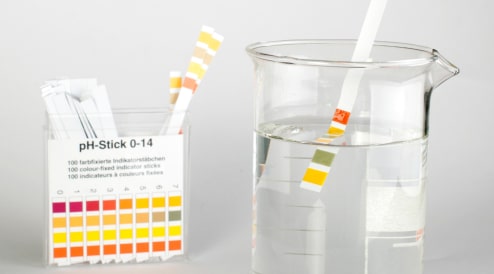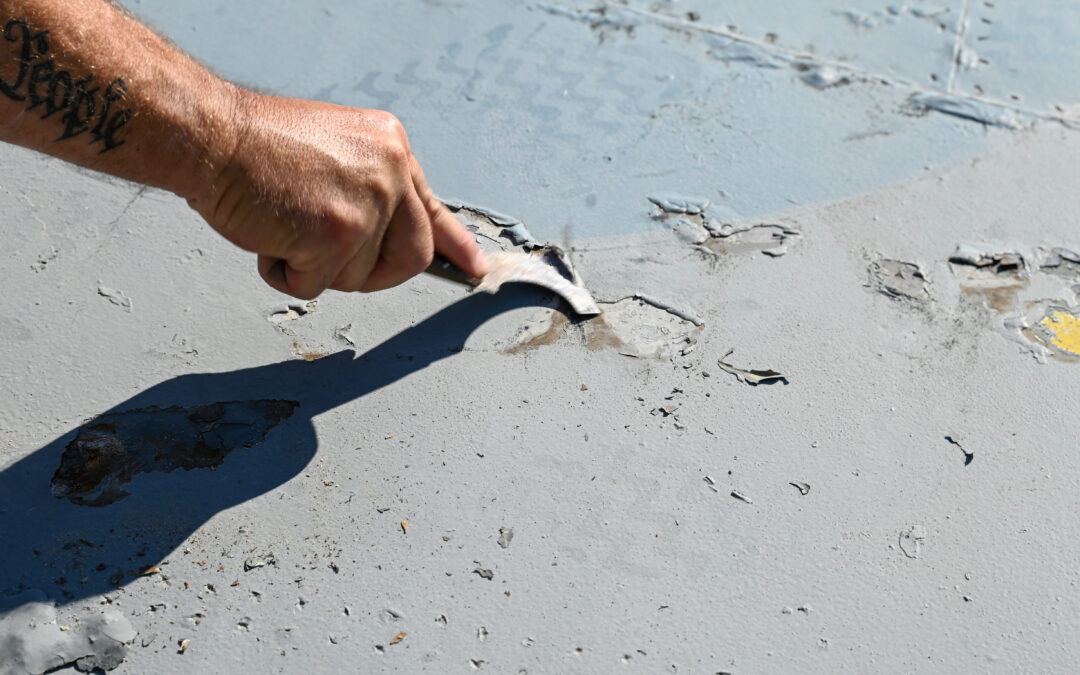The pH level is a critical factor in determining the effectiveness of a cleaning solution in removing dirt, grease, and other contaminants from surfaces.
pH refers to the concentration of hydrogen ions in a solution and is measured on a scale from 0 to 14, with 7 being neutral, values below 7 being acidic, and values above 7 being alkaline.
Different surfaces require different pH levels to effectively clean and remove contaminants. For example, acidic solutions are effective at removing rust and mineral deposits, while alkaline solutions are effective at removing grease and oil. It is important to have the right pH level when cleaning to avoid damaging the surface.
If the pH level of cleaning chemicals is too high or too low, it can cause damage to the surface being cleaned. This damage can lead to serious harm to the aircraft and its occupants.
Acidic solutions can cause etching or pitting on certain surfaces, such as marble or limestone, while alkaline solutions can cause discoloration or damage to surfaces such as aluminum or brass. Additionally, if a cleaning solution is too strong, it can cause damage to the surface being cleaned, such as removing the protective coating.
Safety Precautions
The pH level of a cleaning solution is also important for the safety of the user. If the pH level is too high or too low, it can cause skin irritation or even chemical burns. It is important to follow the manufacturer’s instructions and wear appropriate protective equipment when using cleaning solutions.
Technicians should use FAA-approved cleaning products to prevent disasters, component damage, and ensure safety.
Mineral Content of Water
In addition to the pH level of cleaning chemicals, it is also important to consider the pH level of the water used for cleaning. Minerals determine the hardness or softness of water. These minerals include calcium and magnesium. These minerals come from soil and geological formations as water flows through them on its way to larger bodies.
Hard water, which has a high mineral content, can affect the pH level of the cleaning solution and reduce its effectiveness. Soft water, on the other hand, can increase the effectiveness of the cleaning solution by allowing it to penetrate and dissolve dirt and grime more easily.
Because water ranges from hard to soft, it is important to understand which type of water is best for cleaning certain components.
The Dangers of Hydrogen Embrittlement and Corrosion
When cleaning aircraft surfaces, the pH level of cleaning chemicals must be considered in order to prevent damage to the components. To avoid corrosion and hydrogen embrittlement, technicians must use products with the appropriate pH levels. Using the wrong cleaning products on certain surfaces can cause detrimental damage to the component.
In October of 1992, Chinook 89-00173 was completing a contour flying exercise in Alaska when the aircraft began spinning. Though it impacted into the ground, the aircraft remained upright and all the occupants managed to survive.1
The aircraft partially lost control due to hydrogen embrittlement, which caused the metals to become brittle and crack. Even a small micro-crack can cause major issues during flight. Using cleaning products with the proper pH levels can help avoid incidents like this one.
pH is a critical factor in cleaning surfaces effectively and safely. The correct pH level is essential to achieve the desired cleaning results without causing damage to the surface being cleaned. It is important to follow the manufacturer’s instructions and wear appropriate protective equipment when using cleaning solutions. By understanding the importance of pH in cleaning, we can ensure that our surfaces are clean and well-maintained, without causing any damage or harm to ourselves or the surface.
Learn more about proper cleaning techniques and protocols for aviation.

The Clean Air Act’s Impact on Industry Compliance
The Clean Air Act continues to evolve, industries face ongoing challenges in meeting new and emerging standards.



